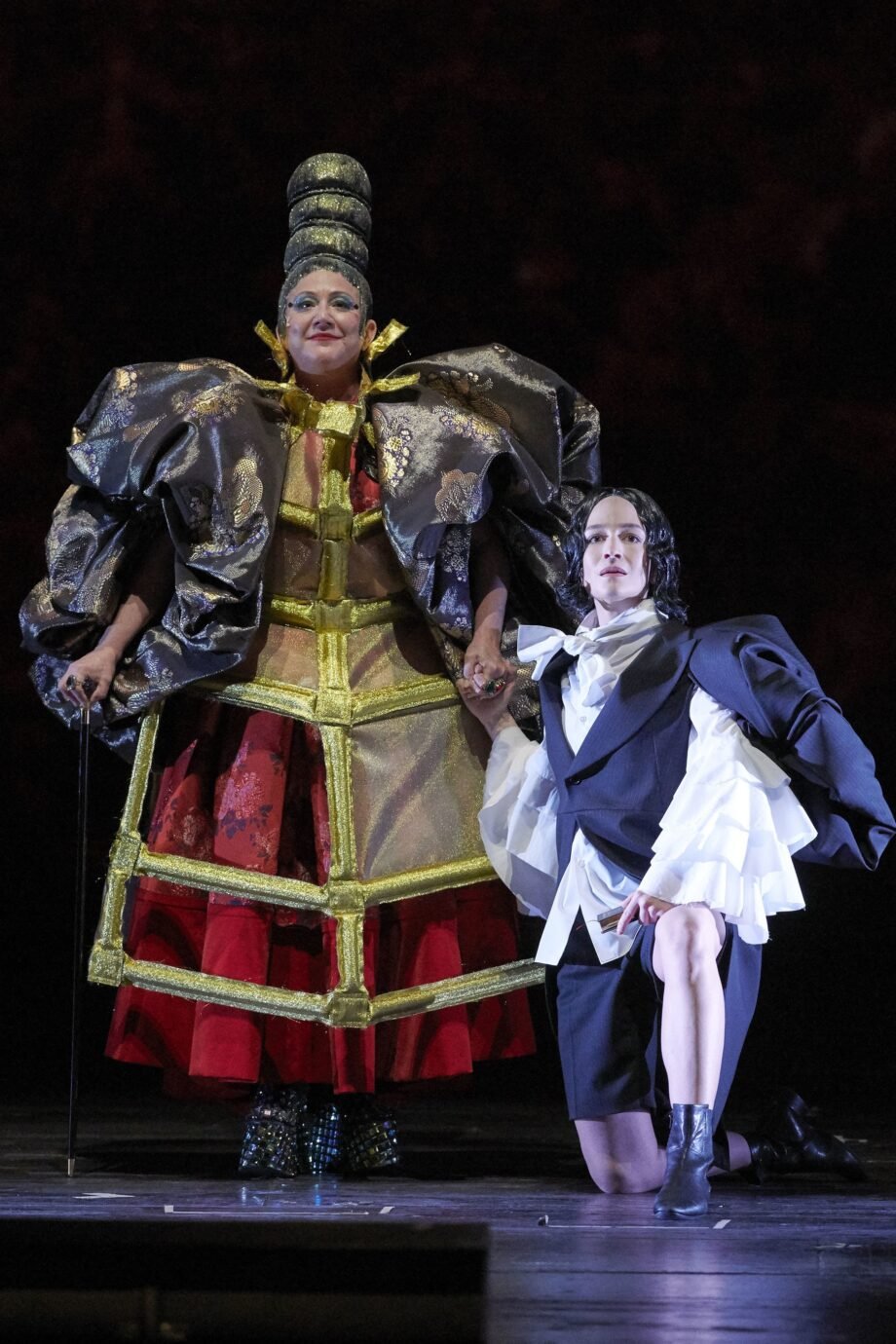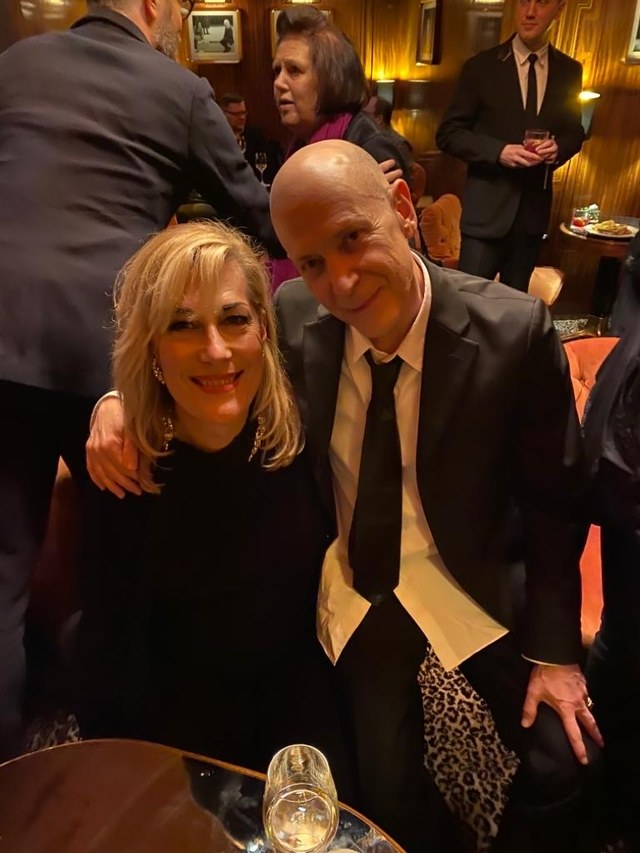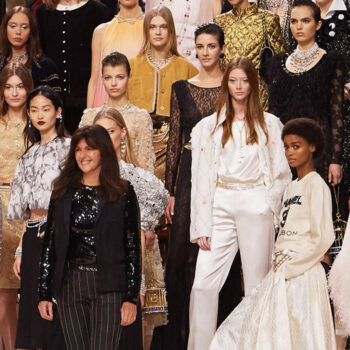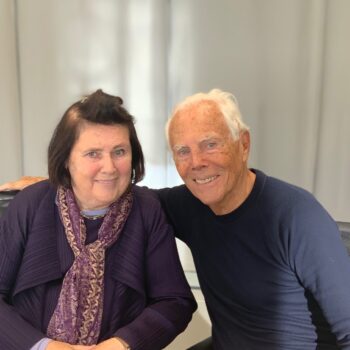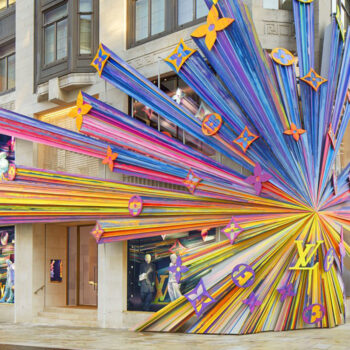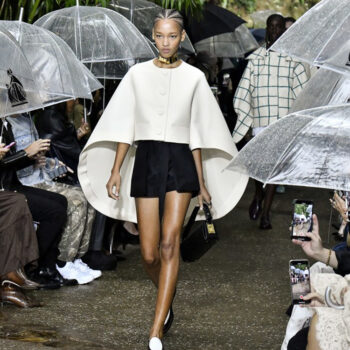The applause rang out, as a torrent of figures swept forward – a long, colourful line of women (or were they men?) on stage at the Vienna State Opera.

Here were figures covered in bold pouf dresses, from the scarlet grandeur of Queen Elizabeth I and her pretty pageboy to men dressed as women – or the other way around – for the 142 costumes.

In this tour de force, embracing the sexual duality and trans identity of Virginia Woolf’s Orlando, there were two other protagonists: Olga Neuwirth, the Austrian composer, with her engagement in music and art and an exceptional position as a woman at the male-dominated Vienna Opera House; and Rei Kawakubo of Comme des Garçons, who had produced a spectacular array of costumes.

The complete list of outfits included 72 for the main chorus; yet more for three completely different choruses; and 62 principal costumes, taking the Orlando story even further than its original sweep from the Elizabethan age to the early 20th century.
This version not only took the story through the Second World War to current times, but also might claim to be the first balletic study of today’s fascination: gender fluidity.
